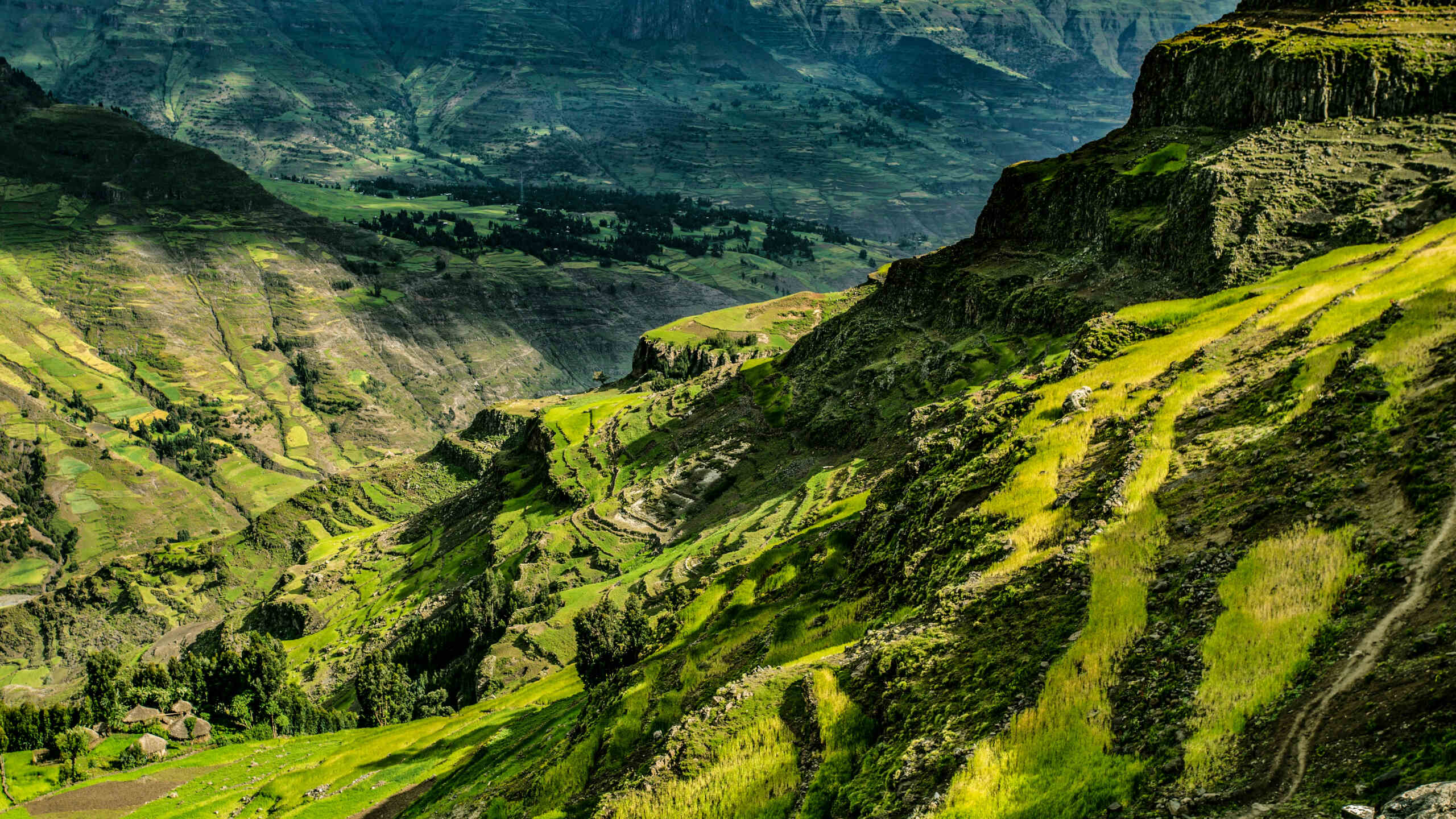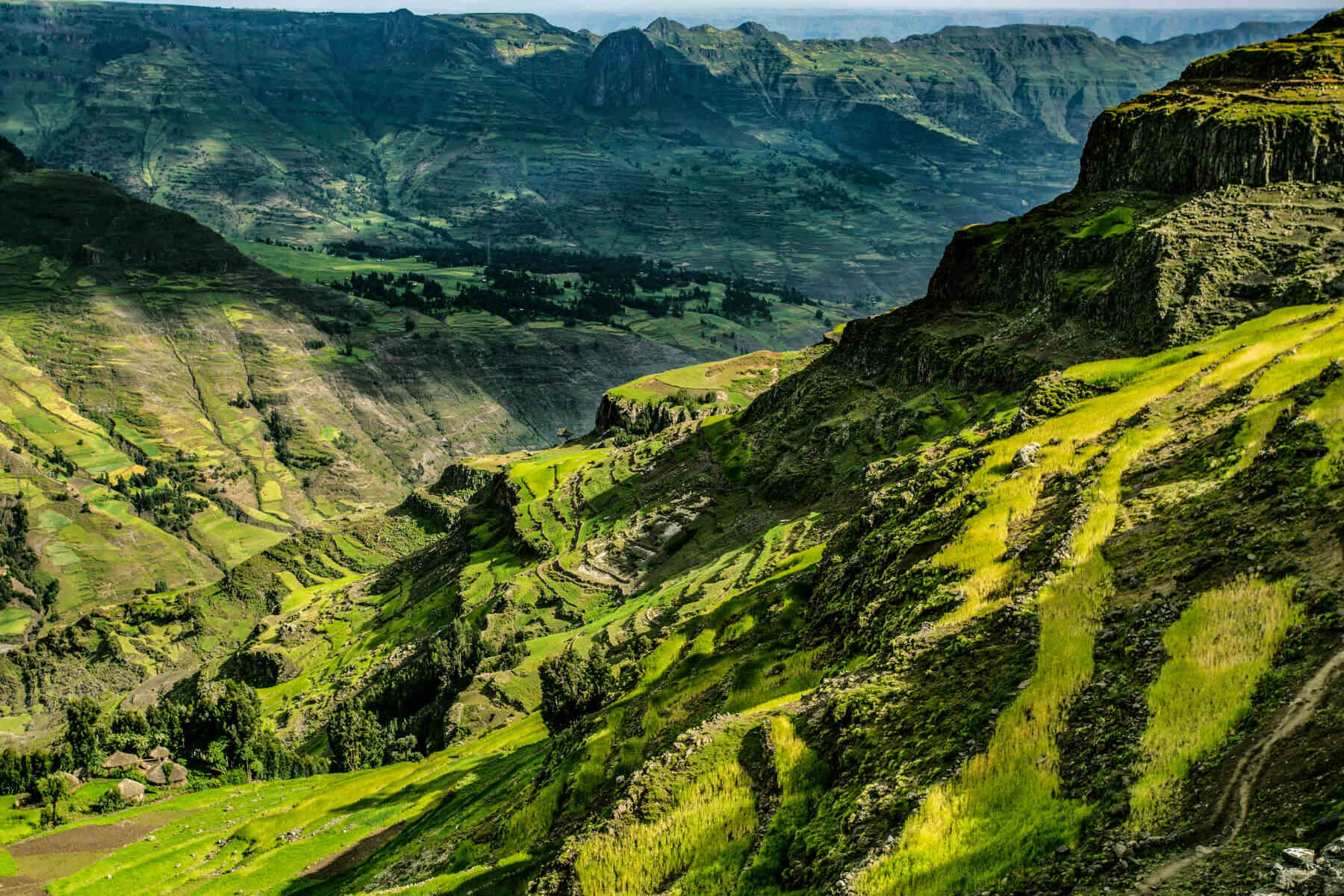Reforestation In
Ethiopia
Ethiopia's landscape is diverse and striking, with forests covering 14.7%, and woodland and shrubland accounting for 44.7% of its land area. The country features high plateaus, mountains, and dry plains, providing dramatic scenery. Ethiopia's varied climate includes dry, tropical, rainy, and temperate regions, each with distinct temperature and rainfall patterns. Forests are crucial for food security and sustainable livelihoods, supporting millions across the country.
Ethiopia's forests face significant threats from deforestation and degradation. Key drivers include clearing land for agriculture, illegal wood extraction for charcoal and firewood, overgrazing, and forest fires. Fuelwood and informal logging contribute to about 50% of forestry-related carbon emissions. Rapid population growth and high energy demand also drive deforestation, while the focus on agriculture for economic growth further impacts forest cover.

Ethiopia Stats
1,145
species
Ethiopia has 284 species of wild mammals and 861 species of birds.
Ethiopia - Country Profile, Convention of Biological Diversity
18.6%
forest cover loss
Between 1990-2010, Ethiopia lost 18.6% of its forest cover.
Impacts of Land Use and Land Cover Change on Vegetation Diversity of Tropical Highland in Ethiopia, Wiley Online Library
83%
population Employed
83% of the population is employed through the agriculture sector.
Ethiopia - Country Profile, Convention of Biological Diversity
75%
Habitat Loss
At least 75% of California’s original habitat has already been lost.
60%
Of Water
60% of potable water in California is sourced from forested watersheds.
Project Highlights
With deforestation threatening habitats and livelihoods, reforestation in Ethiopia can help rejuvenate landscapes, improve water resources, and support local communities by creating jobs and sustaining agriculture. Learn about two recent reforestation projects that planted trees in Ethiopia!

Amhara Region
The goal of this project is to protect eroded trees and shrubs, enriching local biodiversity. As the trees grow, they will prevent soil erosion, conserve moisture, and improve water recharge. Reforestation will also benefit the community by improving beekeeping conditions, livestock grazing, and income from seedling sales.
Tree planting in Gullele Botanic Garden
The goal of this project is to benefit local farming families by providing economic opportunities and encouraging women's participation. Community engagement has grown, with over 400 volunteers involved. The project boosts biodiversity through reforestation, introduces new species, and helps combat climate change by sequestering carbon and preventing soil erosion.


Hog and Sheep Fire Restoration
This project reforested areas that were impacted by the 2020 Hog and Sheep fires. These high-severity fires heavily damaged local watersheds and habitat areas. Planting trees helped to restore habitat, improve soil stability, and increase carbon sequestration. Seedlings were planted at variable densities depending on slope, aspect, soils, site class, and soil moisture in late winter to early spring.



